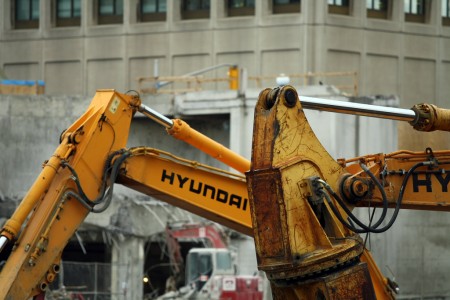
Environmental Defence has put out a new report on the oil sands that speaks well to both a general and a specific issue. Climate change policy is often about deciding on a total permissible quantity, then haggling over how it gets divided, with everyone asserting that their special circumstances justify lenient treatment. For instance, Canada argues that it should be able to cut its emissions by less than other states because it is large, cold, an energy exporter, etc. By contrast, other states argue for more generous targets on the basis of past action, ongoing extreme poverty, and many other reasons.
Of course, for everyone who gets lenient treatment, someone else needs to pick up the slack, if you are going to meet your targets. What the Environmental Defence report highlights is how giving an easy ride to the oil sands will mean higher costs for everyone else, if Canada is to hit its 2020 and 2050 mitigation targets.* The report – entitled Divided We Fall: The Tar Sands vs. The Rest of Canada – highlights how placing a disproportionate reduction burden on Ontario and Quebec could be harmful for their economic prospects, especially given how greater opportunities for mitigation exist in the fossil-fuel intensive western industries. Also, given the degree to which resource windfalls (in terms of both tax revenues and jobs) tend to accrue provincially, Ontario and Quebec have an even stronger case against allowing a weaker carbon pricing system for hydrocarbon production in Alberta and Saskatchewan.
Domestically, this is just one of the innumerable issues of Canadian federalism. Regional interests generate tensions that can sap the ability of Canada as a whole to achieve good outcomes. Certainly, some provinces will find it much easier than others to recognize and accept the fact that the fossil fuel industry has no long-term future. It’s a one-off bonanza that our legal and moral obligations on climate change will not permit us to fully realize. Instead of continuing to invest in a dead end, Canada needs to get serious about building an economy that can thrive in a low- and ultimately zero-carbon future.
The report is also available in French (PDF).
* It is worth remembering that, while the 2020 and 2050 targets have received much more media attention recently, the original announcement of the current government’s Turning the Corner climate change plan promised that total Canadian emissions would peak no later than 2012. Most people seem to have forgotten about the third promise.









